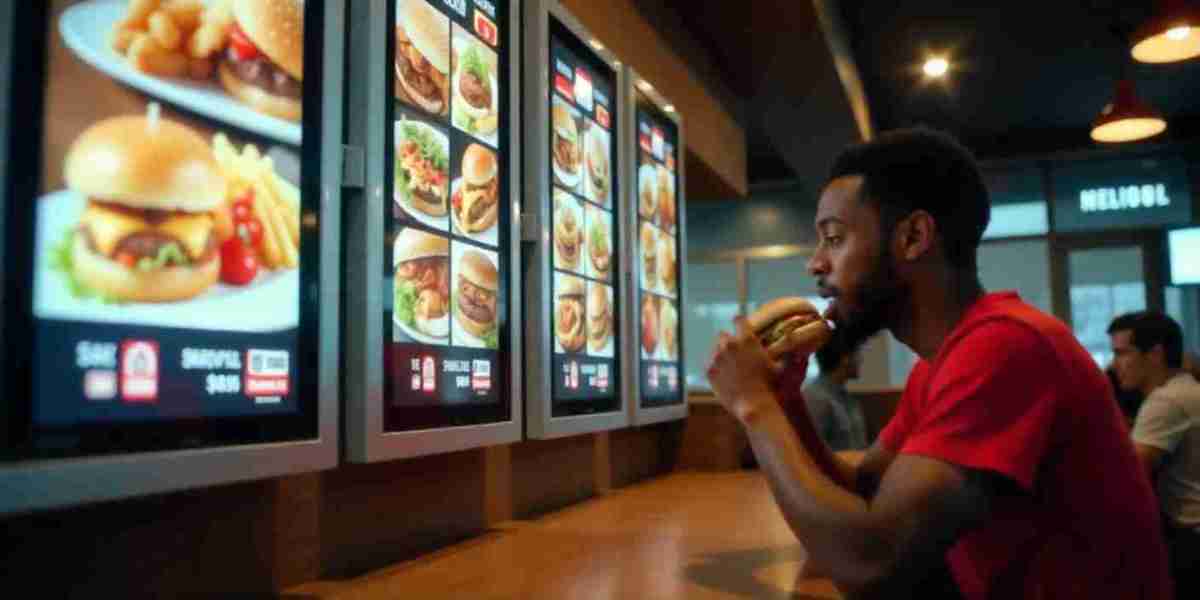Restaurants in the fast-paced digital world are always seeking innovative ways of improving customer experience and customer experience while simplifying operations. One of such innovations is the restaurant digital menu or digital menu board which is changing the way customers relate with food establishments. From QSRs to fine dining, digital menus provide flexibility, efficiency, and a modern feel that printed menus cannot beat.
What is Restaurant Digital Menu?
A restaurant digital menu is a dynamic screen that replaces old fashioned paper or board menus with digital screens. These can be LCD, LED or interactive touch screen displays of food items, their prices, promotions, and even nutritional information. Digital menu boards are popular in drive-thrus, cafes, bars, and high-class restaurants to have an attractive and easily changeable menu system.
Advantages of Digital Menu Boards to Restaurants
- Easy and Instant Updates
Unlike the printed menus that need to be reprinted whenever there is a change in price or new dish, digital menus can be changed in seconds. Restaurant owners can change items, change prices or add daily specials from remote locations, time and cost saving.
- Enhanced Visual Appeal
High-resolution images and videos of dishes can attract customers and make sales. Interactive animations, bright colors, and professional food photography make the menu more attractive than static text.
- Improved Customer Experience
Interactive digital menus offer customers the possibility to browse items and filter by dietary preference (vegan, gluten-free) and even place orders from the screen. This cut waiting time and increases convenience.
- Cost-Effective in the Long Run
Although the initial cost of setting up may cost more than printed menus, the digital boards eradicate printing costs in the long run. They also eliminate errors caused by old menus, enhancing efficiency as a whole.
- Effective Promotions and Upselling
Restaurants can position best-selling items, combo offers, or limited time offers in a strategic manner. Digital menus can also offer add-ons, to drive average order value.
- Better Brand Image
A slim digital menu creates a modern and tech-savvy image, appealing to the younger generation who prefer digital interactions. It is also an indication of a restaurant’s desire to be innovative.
Types of Restaurant Digital Menus
- Static Digital Menu Boards
Small digital displays of menu items and prices, which are typical for fast-food chains and cafes.
- Interactive Touchscreen Menus
Enable customers to browse, customize and even pay orders from the screen, which is often used in self-service kiosks.
- Drive-Thru Digital Menu Boards
These boards are designed for quick-service restaurants and refresh in real-time and usually feature voice ordering systems.
- Tabletop Digital Menus
Available at dinner in restaurants, where the customers can see the menu, order and call the servers by tablets.
What is the process of implementing digital menu in a restaurant?
- Select the Best Display – Select quality screens that will fit the size and light of your restaurant.
- Use Professional Menu Design Software – Canva, Adobe Spark, or dedicated digital signage software allows producing nice layouts.
- Integrate with POS Systems – Have a seamless synchronization between your digital menu and your billing system.
- Frequently Update Content – Refresh the menu with seasonal food, promotion and real-time changes.
- Train Staff – Make sure that employees are able to maintain and troubleshoot the digital menu system.
Conclusion
The restaurant digital menu board is no longer a luxury but a need in the cut-throat food industry. It increases customer engagement, lowers the cost of operation and offers futuristic dining experience. With the advancement in technology, more restaurants will be embracing digital menus to keep up with the trends and customers’ expectations.
Do you have a printed menu in your restaurant? Perhaps, it is high time to switch to a digital menu and take your business to the next level!




